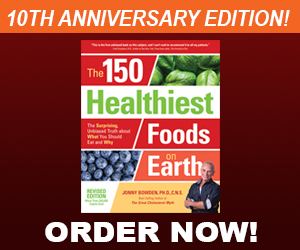A new survey showed that over half of Americans find doing their taxes easier than figuring out a healthy diet.
The International Food Information Council (IFIC) Foundation’s 2012 Food & Health Survey concluded that people want to improve their eating, yet over 75% of the over 1,000 Americans surveyed have little idea how to do that and find often-conflicting nutritional information confusing.
Researchers learned Americans are making substantial time investments determining healthy eating options. For instance, we’re eating more whole grains, fiber, and protein. We’re watching calories and reducing sugar, salt, and fat intake.
Regardless of these efforts, only 20% reported they ate a healthy diet.
“Clearly, there is a disconnect for many Americans,” admitted Marianne Smith Edge, Senior Vice President of Nutrition and Food Safety at IFIC Foundation.
No kidding.
Among the other findings in this survey:
- Over half of participants said they were trying to lose weight.
- Less than one in 10 Americans correctly estimate the number of calories they need to maintain weight.
- 87% of parents believe sitting down to eat meals with their family is important.
- 69% of parents worry more about their kids’ diets than their own.
- Participants recognized the USDA’s MyPlate graphic, which they gave a big thumbs-up for clearly detailing healthy eating.
That last one leaves me a little bewildered. If the updated Food Pyramid so lucidly educates people about choosing the right foods, why are so many people confused what constitutes healthy eating?
People often ask me why making the right eating choices proves so confusing.
If eating healthy is common sense (as some people claim), why does a trip to a supermarket – even a so-called healthy one like Whole Foods – become a maddening obstacle course fraught with hyperbole, misleading claims, and outright nutritional fabrications?
I could fill a book with answers, but I’ll leave you with five reasons why people often find choosing the right foods confusing and frustrating:
- Food manufacturers don’t have your health in mind. Despite whatever claims the box makes, manufacturers aim for your wallet and not your health. And as shoppers become savvier, manufacturers must stay one step ahead of the curve with marketing claims.
- Soy, corn, and wheat are subsidized, ubiquitous crops. If you really scrutinize labels and understand the names they hide behind, you’ll quickly discover that soy, corn, and/or wheat are in nearly every processed food. Worse yet, companies try to convince us these are healthy foods. Witness soy’s marketing, for instance, even though experts point out its numerous problems. Same deal with the “whole grain goodness” nonsense. Even the corn industry has gotten into the act, trying to give a positive spin to high-fructose corn syrup.
- Many things you might think are healthy aren’t. You’re smart enough to know better, but some people fall for fallacious health claims because their cousin or some “expert” proclaims it healthy. Let’s bust a few myths. Fruit-on-the-bottom yogurt? It’s got as much sugar as a candy bar. Agave? It’s often sold at health food stores, but it can cause more damage than table sugar. Just because you buy it at a health food store or it’s certified organic doesn’t make a food automatically healthy.
- It’s not the calories that count. Well, that’s not entirely accurate. Calories do count, but where those calories come from matters a lot more. Quick case in point: 500 calories’ worth of salmon and spinach are going to have a vastly different effect on your health (and fat burning) than the same amount of calories from pizza and ice cream. You wouldn’t know that, though, from the popularity of 100-Calorie packs and other calorie-focused foods.
- Fat is not your enemy. Witness the endless array of fat-free and low-fat products at your grocery store. Did manufacturers not get the memo that fat can actually be healthy? Whenever you see phrases like fat-free and low-fat, know that you’re probably eating a chemical concoction that’s likely higher in sugar than the original version.








Leave A Comment